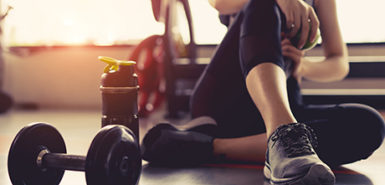
If you’ve vowed to be more active this year, be sure you have proper athletic shoes, a doctor suggests.
Our Take
When breaking in a new pair of athletic shoes, Marisha Stawiski, DPM, always instructs her patients to first get used to wearing the shoe in a non-athletic and non-impact type of environment.
“My suggestion is always that the shoe is first worn around the home,” noted the podiatrist with Spectrum Health Medical Group Foot & Ankle. “As long as the environment is comfortable and the shoe fits well after a couple of days, then it is appropriate to start utilizing it in a more high-impact, athletic environment.”
In terms of picking out the right shoe, arch type should be a top factor to consider.
“It is essential you purchase a shoe designed for your specific arch type,” Dr. Stawiski said. “An individual with a supinated (high arch) foot type who attempts to wear a shoe designed for a pronated (low arch) foot type will likely develop issues with pain in the arch, knees or even the hips. This is the same for an individual with pronated arches who is improperly fitted into a shoe for a supinated, high arched foot.”
A reputable shoe outfitter or a physician who’s an expert in foot and ankle care can help people navigate this process of finding the right shoe for your arch type.
“The right shoe is important for a runner as much as a good tennis racket is important for a tennis player,” said Dr. Ronald Lepow. He is an assistant professor in the department of orthopedic surgery at Baylor College of Medicine in Houston.
You don’t have to spend hundreds to get good athletic shoes, but you do need shoes that match your level and type of activity, Lepow added.
For example, a training flat provides more protection and is a good choice for weekenders or those doing moderate exercise.
Running shoes have added support and cushioning and are good on tracks and for races. Training shoes tend to be more flexible, permit a wide range of movement and are good to wear in the gym, according to Lepow.
He said that athletic shoes should be a half size or full size larger than your regular shoe size. There should be a thumb nail’s distance between the end of your big toe and the end of the shoe, which can be checked when you’re standing with the shoes on and laced up.
Wearing the wrong type of shoe can lead to injury, pain and discomfort after exercise. Back or hip pain, shin splints or cramps could be indications of improper shoes, he noted.
Despite the ease of online shopping, it’s best to go to a shoe store, try on shoes and walk around in them, Lepow said in a Baylor news release. After buying shoes, wear them around the house to determine if there are any problems before you actually use them for exercise.
Some shoe makers offer shoes for pronation (flat feet) or supination (high arched feet). Such shoes can be helpful, but if they aren’t, you may need custom orthotics, Lepow said.
 /a>
/a>
 /a>
/a>
 /a>
/a>